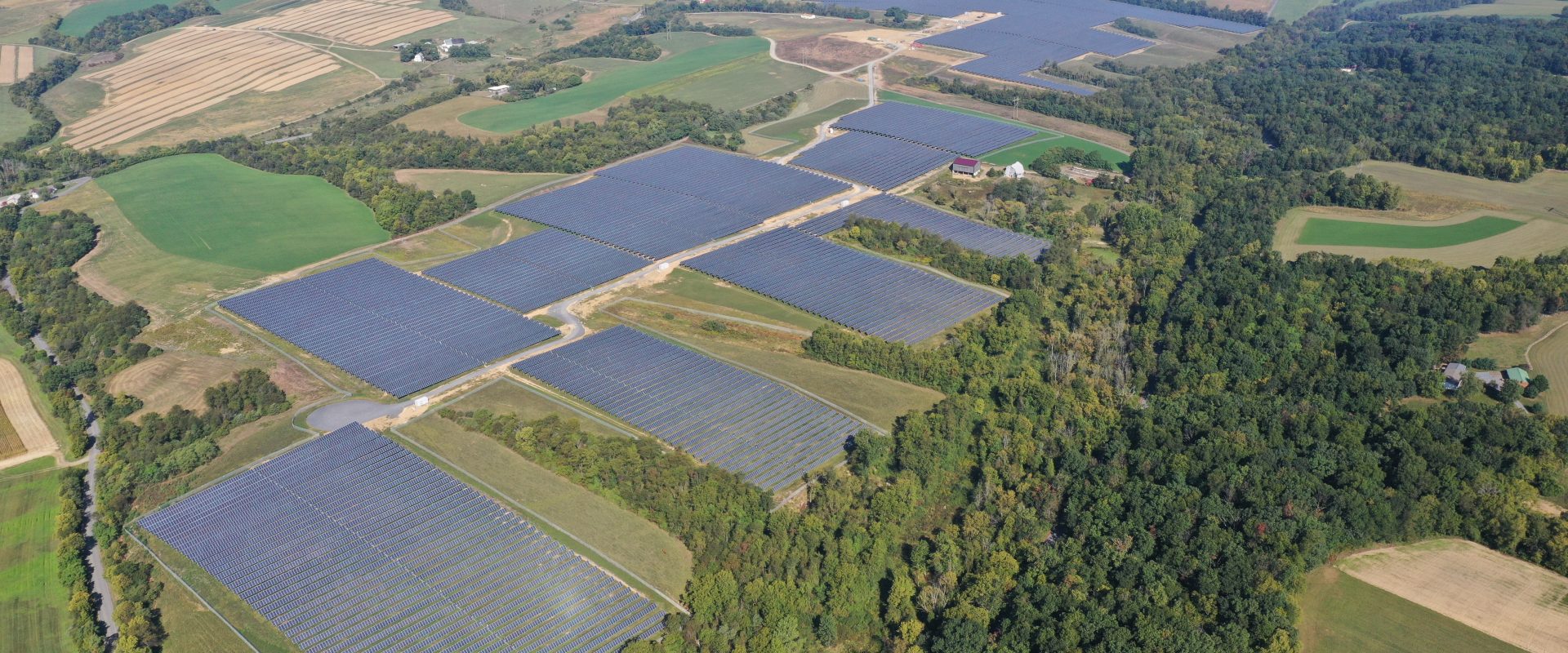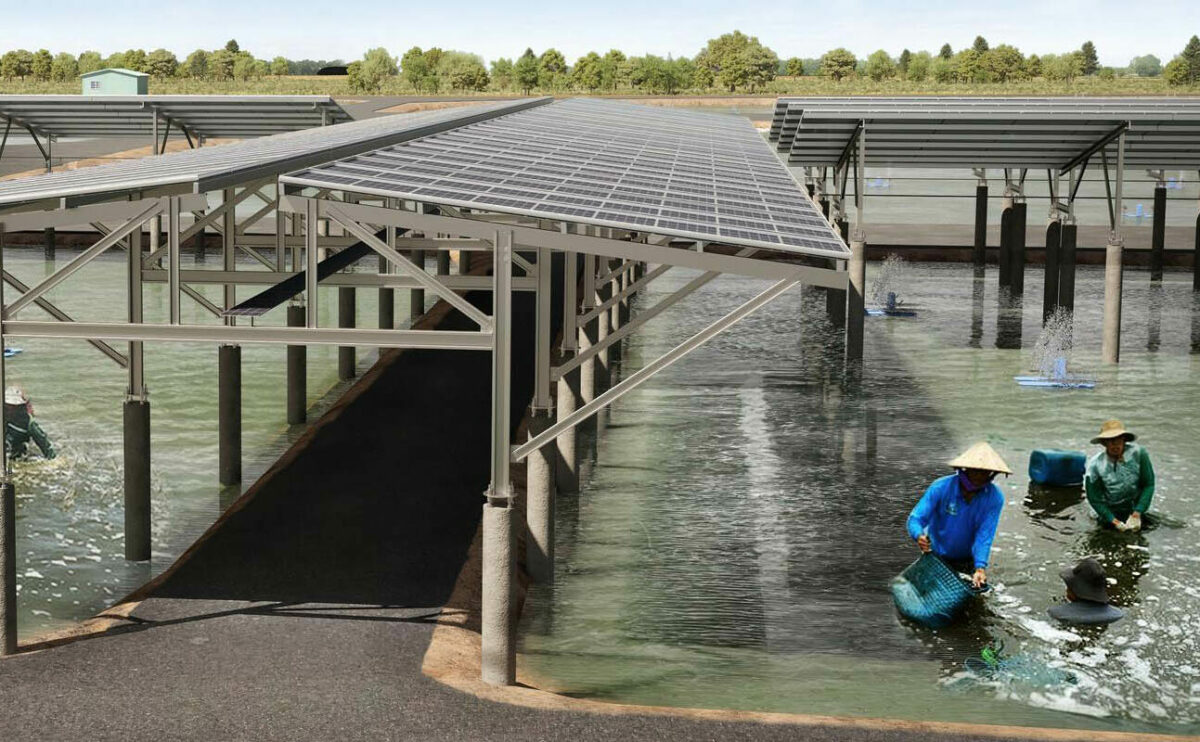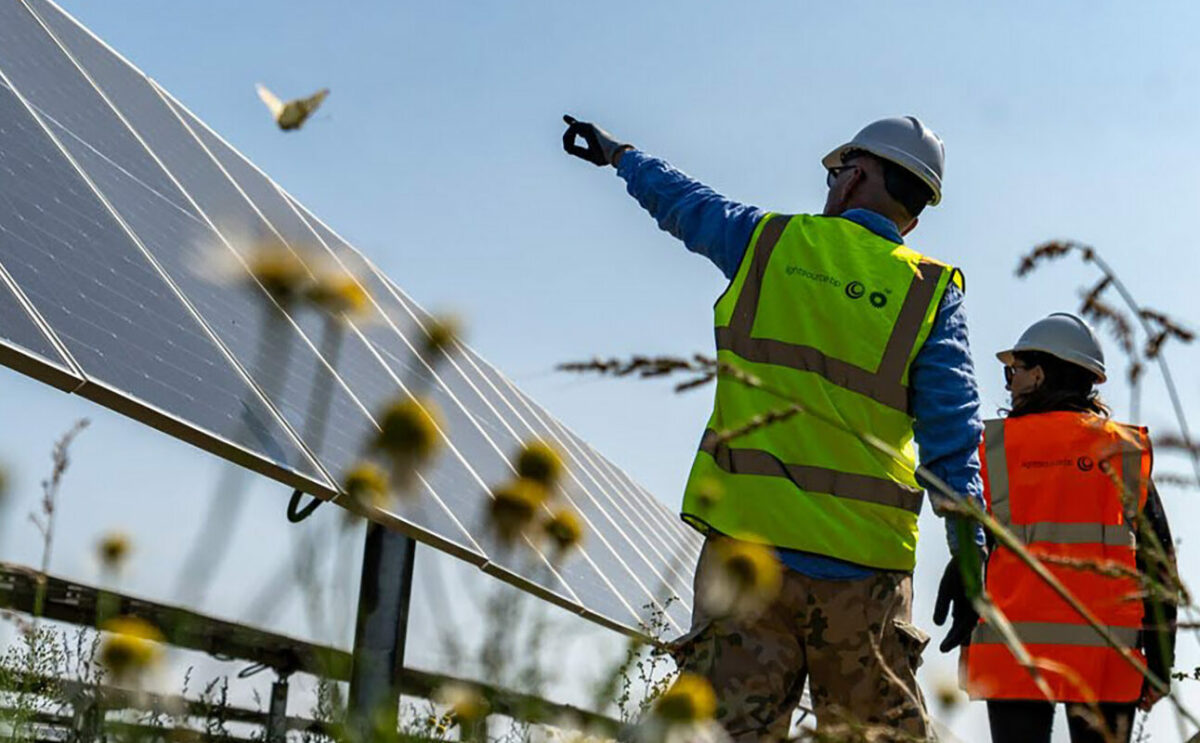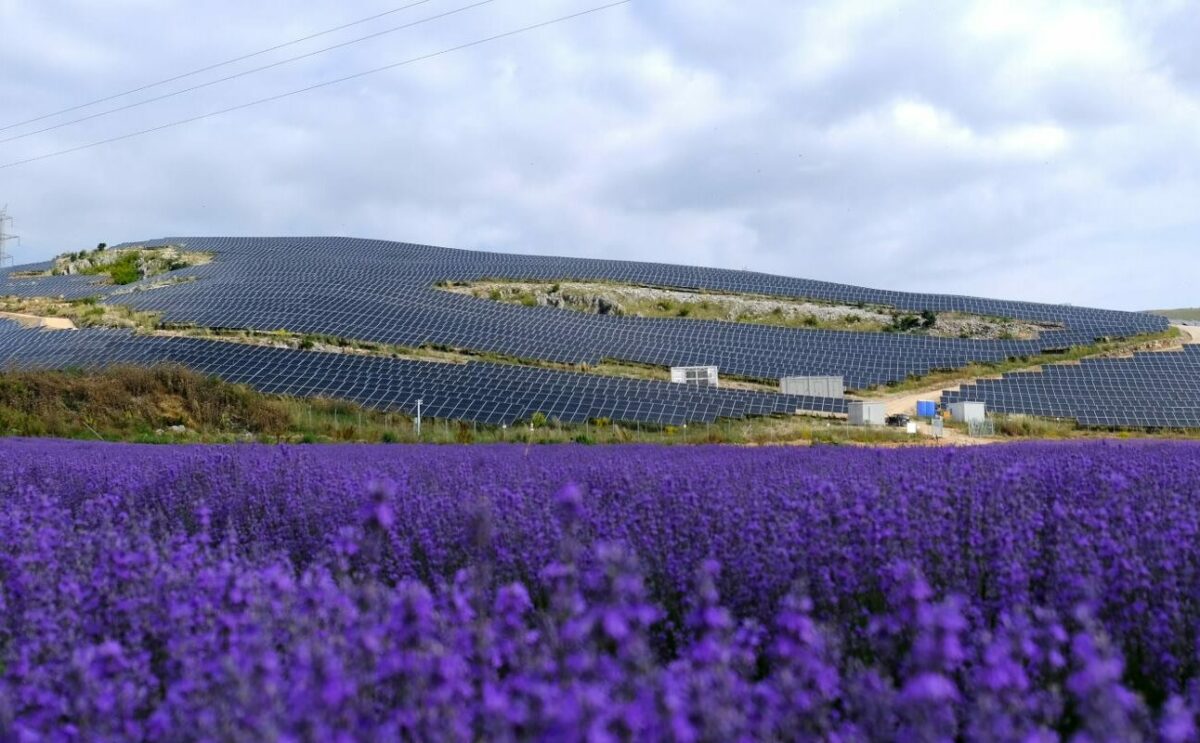Penn State powers up with solar
The University and Lightsource bp partner to boost the sustainable benefits of solar energy for a brighter future
Penn State announced that this month the University has begun purchasing renewable electricity generated from three Lightsource bp solar farms that have completed construction in Franklin County. The projects were initiated in early 2019 upon the signing of a 70 megawatt Power Purchase Agreement (PPA) under which Penn State would purchase 100% of the electricity generated by the projects constructed and operated by Lightsource bp.
In total, the solar farms will produce over 100 million kilowatt-hours of electricity in year one, supplying 25% of the University’s state-wide electricity needs and lowering Penn State’s greenhouse gas emissions by 57,000 mtCO2e per year, or the equivalent of removing 12,100 fuel-burning cars from the road. It will provide Penn State with estimated cost savings in year one of $272,000 and more than $14 million over the 25-year contract term.
David Gray, Senior Vice President for Finance and Business and Treasurer, Penn State: “At a time when we are facing so many great challenges, the beginning of this 25-year power purchase agreement offers a bright moment and a true reflection of the university’s ability and commitment to not just grow, but to succeed in a way that enhances the health and sustainability of the planet and future generations.”
Beyond the carbon reduction and cost savings benefits of the solar farms, Penn State and Lightsource bp have a wider mission to maximize the sustainability impacts of solar farming in the U.S. with a comprehensive approach that fosters biodiversity, improves soil health, provides pollinator habitats, and is a long-term living laboratory for students to learn and innovate for our sustainable future.
Kevin Smith, CEO of the Americas, Lightsource bp: “This project is a great example of how, with proper planning and committed partners, utility-scale solar projects can bring a large range of benefits to communities – from providing clean and cost-effective electricity to boosting biodiversity and diversifying farm income.”
Energizing student success with real-world experiences
More than fifty Penn State students with a variety of majors, including business, engineering, and marketing have experienced, and will continue to have access to a variety of learning, research and internship opportunities related to the solar project.
Eric Barron, University President: “From planning to implementation and beyond, our students were granted firsthand, once-in-a-lifetime access to innovative learning and research opportunities related to the expanding renewable energy industry. These living lab experiences prepare students for new career possibilities, and a brighter future for all of us.”
One group of senior engineering students worked with Lightsource BP through the University’s Bernard J. Gordon Learning Factory to design an interactive excel guide for wind and solar developers learning how to navigate the grid interconnection process and related requirements and fees on the local, state and federal level. Another class of students within Penn State’s Smeal College of Business had the opportunity to work on a semester long, real-world project and then pitch business marketing strategies to executives at Lightsource bp as part of their class with Karen Winterich, Professor and Smeal Research Fellow at the college. And during Fall 2019 semester, graduate researchers from multiple disciplines across the university toured the solar site as part of the LandscapeU program which studies the food-energy-water system in the Chesapeake Bay watershed and elsewhere.
“Having Penn State students involved in the project as well as contribute to our business strategy has been an added benefit,” added Smith. “We’ve been impressed with their critical thinking and caliber of work.”
Enhancing resilience of landowners and their land
The three solar farms are on 500 acres of land leased from local landowners, providing a diversified, reliable cash flow in the local Pennsylvania farming community. Additionally, in partnership with Penn State, local farmers, ecology and grazing experts, Lightsource bp created a plan to enhance biodiversity as well as continue agricultural use through rotational sheep grazing to maintain the land and provide a supplemental source of income to local farmers.
Each of the three solar farms – called Nittany 1, 2 and 3 – were seeded with a specially formulated seed mix aptly named Fuzz and Buzz. Developed by the American Solar Grazing Association (ASGA) in partnership with Ernst Conservation Seeds and Pollinator Service, Fuzz and Buzz was specifically designed for solar sites to support grazing, and biodiverse enough to support a range of pollinators. Here in Pennsylvania as well as around the world, habitat loss, disease and environmental contaminants have caused pollinator populations to decline, which has detrimental effects on food crops that rely on pollinators.
The Nittany 1 site will be the first to support grazing activities, to begin in Spring 2021. Sheep grazing will keep the farmland in farm production and employ Pennsylvania farmers. It can also improve soil health by increasing the cycling of nutrients, carbon and water.
Emilie Wangerman, VP of Business Development, Lightsource bp: “From the beginning of our partnership with Penn State, the focus has been on affordability and benefits to the community and environment. Penn State’s robust request for proposal (RFP) process could serve as a blueprint for other universities on how to maximize the positive impacts of an investment in renewable energy.”
A brighter future for Penn State and Pennsylvanians
The solar project contributed significantly to Penn State achieving its goal of reducing its greenhouse gas emissions by 35% from 2005 levels by 2020, and to the realization of Pennsylvania’s goal to reduce its emissions by 80% from 2005 levels by 2050.
Bill Sitzabee, Vice President for Facilities Management, Penn State: “I challenged our team to make this solar project happen in Pennsylvania, and it’s been great to be a part of the teamwork that has transformed that vision into a reality. After converting the university from coal to natural gas, the investment in solar made perfect sense as a next step as we work systemically to address both the demand side and supply side of the energy equation to thoughtfully and incrementally reduce GHGs 80% by 2050.”
As part of an internship with Lightsource bp, Penn State business marketing students helped create a ‘virtual ribbon-cutting’ experience where visitors can learn more about the solar project and take a virtual tour, view digital dashboards of the three solar arrays to see the amount of energy they are producing and amount of carbon they are reducing, and hear from the team who helped make this exciting project a reality. Please join us for the virtual ribbon-cutting event here.
Paul Shrivastava, chief sustainability officer and director of the Sustainability Institute at Penn State: “With 23 campuses and connections to so many communities across the state, Penn State is well positioned to contribute to Pennsylvania becoming a sustainability success story over the next decade. I look forward to more projects like this one where we not only achieve our goals as a university but also improve the resilience of local communities and contribute to a more equitable future for everyone.”
Related news
04 Dec, 2025
Energy in Focus – How local partnership and community engagement sparks project success
At Lightsource bp, we deliver renewable energy and storage solutions while seeking to enhance ecosystems, local economies and progressing a sustainable supply chain.
20 Nov, 2025
Energy in Focus – Building a culture of safety at Lightsource bp
In our first Energy in Focus episode, Will Manchas, Head of HSE for USA and EMEA shares how our Golden Rules help us protect ourselves and others.
22 Oct, 2025
Lightsource bp supports Apple’s renewable energy projects progress across Europe
Lightsource bp is proud to partner with Apple Inc. in support of its goal to achieve carbon neutrality across its entire footprint by the end of this decade.




